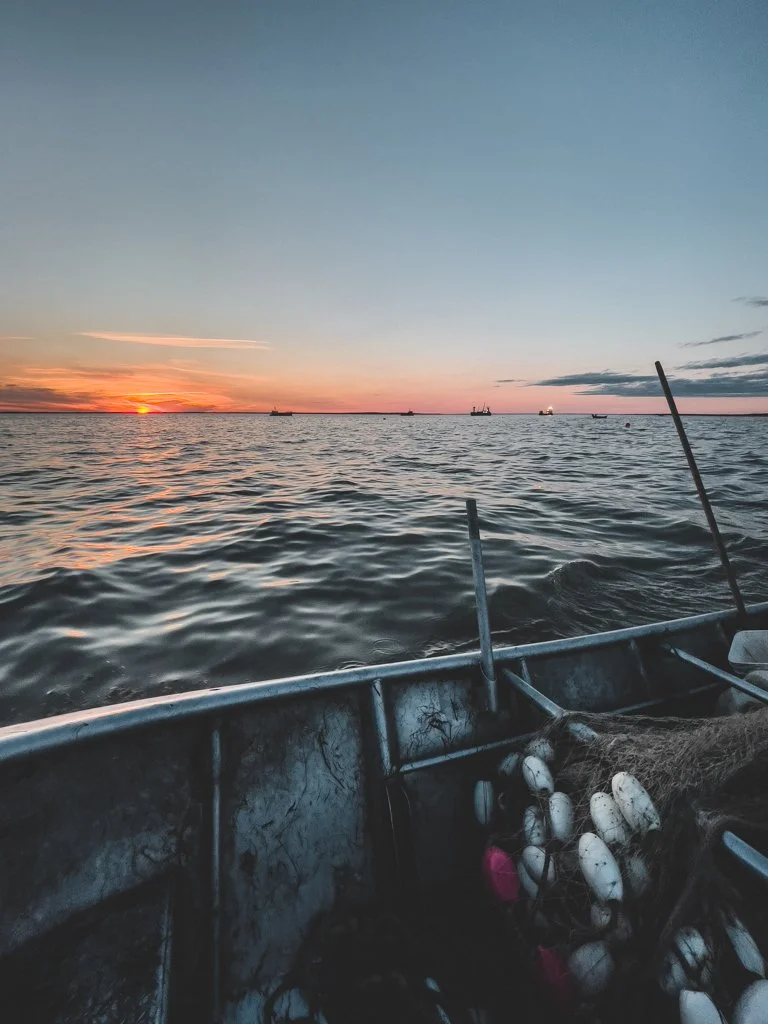My roots in Alaska run deep through familial connection. I am Inupiaq, native to this land. That is what accounts for the calling I have to it. But my beginnings here as a young man began in the commercial fishing industry. For several summers, I returned to fish the sockeye salmon season until I eventually stayed. Fishing was tremendously laborious work, but when I found time, I elected to soak in the rich culture through reading books about and photographing the archaic history remaining on the beaches of the abandoned canneries we called home. Among those canneries was Graveyard Point. There, I found my desire to remain in Alaska indefinitely.
In the off-season, set-net skiffs are piled into a storage building.
Graveyard point from the sky looking towards Bristol Bay, AK.
Sunset in the bay.
As the ocean erodes the shore away, most buildings go with it. This one remained standing, a testament to the dedication of those who built them.
While the fishing is closed, fishermen gather and enjoy the environment around them.
Open faced skiffs are often seen full of sockeye salmon. Hard work is put in over a 20 hour day. Nets are pulled in by hand and every individual fish picked out of them.
When the nets were slow, we often fell asleep. Working 20 hour days for weeks at a time took a large toll. Every boat nap helped.
The tenders picked up the fish from fisherman to be brought to the processors.
Grizzlies are often seen in the tundra as well as patrolling the waters edges looking for salmon.








